Potrebujeme váš súhlas na využitie jednotlivých dát, aby sa vám okrem iného mohli ukazovať informácie týkajúce sa vašich záujmov. Súhlas udelíte kliknutím na tlačidlo „OK“.
ASTM D7474-12
Standard Practice for Determining Residual Stresses in Extruded or Molded Sulfone Plastic (SP) Parts by Immersion in Various Chemical Reagents
Automaticky preložený názov:
Štandardné praktiky pre stanovenie zvyškových napätí v extrudované alebo Čelné sulfón Plastic (SP) časti ponorením do rôznych chemických činidiel
NORMA vydaná dňa 1.4.2012
Informácie o norme:
Označenie normy: ASTM D7474-12
Poznámka: NEPLATNÁ
Dátum vydania normy: 1.4.2012
Kód tovaru: NS-38553
Počet strán: 4
Približná hmotnosť: 12 g (0.03 libier)
Krajina: Americká technická norma
Kategória: Technické normy ASTM
Kategórie - podobné normy:
Anotácia textu normy ASTM D7474-12 :
Keywords:
liquid reagent, PESU, PPSU, PSU, residual stress, SP, stress cracking, Environmental stress crack resistance (ESCR), Residual stress, Stress cracking tests, Sulfone plastics (SP), ICS Number Code 83.080.01 (Plastics in general)
Doplňujúce informácie
| Significance and Use | ||||||||||||||||||||||||||||||||||||||||||||||||||||||||||||||||||
|
Thermoplastic moldings contain residual stresses due to differential cooling rates through the thickness of the molding. Changes in residual stress have been found to occur with time after molding due to stress relaxation. Many part performance parameters as well as part failures are affected by the level of residual stress present in a part. Residual stresses cause shrinkage, warpage, and a decrease in environmental stress crack resistance. This practice estimates the relative magnitude of residual stresses in parts produced from the series of sulfone plastics (SP), namely polysulfone (PSU), polyethersulfone (PESU), and polyphenylsulfone (PPSU) materials. No direct correlation has been established between the results of the determination of residual stresses by this practice and part performance properties. For this reason, this practice is not recommended as a substitute for other tests, nor is it intended for use in purchasing specifications for parts. Despite this limitation, this practice does yield information of value in indicating the presence of residual stresses and the relative quality of plastic parts. Residual stresses cannot be easily calculated, hence it is important to have an experimental method, such as this practice, to estimate residual stresses. This practice is useful for extruders and molders who wish to evaluate residual stresses in SP parts. This can be accomplished by visual examination after immersion in one or more chemical reagents to evaluate whether or not cracking occurs. Stresses will relax after molding or extrusion. Accordingly, both immersion in the test medium and visual examination must be made at identical times and conditions after processing, if comparing parts. It is important to note the differences in part history. Thus, this technique may be used as an indication for quality of plastic processing. The practice is useful primarily for indicating residual stresses near the surface. |
||||||||||||||||||||||||||||||||||||||||||||||||||||||||||||||||||
| 1. Scope | ||||||||||||||||||||||||||||||||||||||||||||||||||||||||||||||||||
|
1.1 This practice covers the evaluation of residual stresses in extruded profile or molded SP parts. The presence and relative magnitude of residual stresses are indicated by the crazing of the specimen part upon immersion in one or more of a series of chemical reagents. The specified chemical reagents were previously calibrated by use of Environmental Stress Cracking (ESC) techniques to cause crazing in sulfone plastics (SP) at specified stress levels. 1.2 This practice applies only to unfilled injection molding and extrusion grade materials of high molecular weight as indicated by the following melt flow rates: PSU 9 g/10 min, max., PESU 30 g/10 m, max, and PPSU 25 g/10 min, max. Lower molecular weight (higher melt flow) materials will craze at lower stress levels than indicated in Tables 1-3. (See Specification D6394 for melt flow rate conditions.) 1.3 The values stated in SI units are to be regarded as the standard. The values given in parentheses are for information only. Note 1—There is no known ISO equivalent for this standard. 1.4 This standard does not purport to address all of the safety concerns, if any, associated with its use. It is the responsibility of the user of this standard to establish appropriate safety and health practices and determine the applicability of regulatory limitations prior to use. TABLE 1 Liquid Reagents for Residual Stress Test for PSU
TABLE 2 Liquid Reagents for Residual Stress Test for PESU
TABLE 3 Liquid Reagents for Residual Stress Test for PPSU
|
||||||||||||||||||||||||||||||||||||||||||||||||||||||||||||||||||
| 2. Referenced Documents | ||||||||||||||||||||||||||||||||||||||||||||||||||||||||||||||||||
|
||||||||||||||||||||||||||||||||||||||||||||||||||||||||||||||||||
Podobné normy:
Historická
1.6.2013
Historická
15.7.2013
Historická
1.7.2010
Historická
15.11.2009
Historická
1.2.2014
Historická
1.9.2013
Odporúčame:
EviZak - všetky zákony vrátane ich evidencie na jednom mieste
Poskytovanie aktuálnych informácií o legislatívnych predpisoch vyhlásených v Zbierke zákonov od roku 1945.
Aktualizácia 2x v mesiaci !
Chcete vedieť viac informácii ? Pozrite sa na túto stránku.


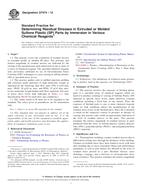
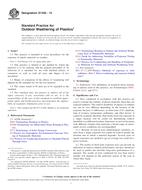 ASTM D1435-13
ASTM D1435-13 ASTM D1499-13
ASTM D1499-13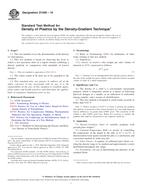 ASTM D1505-10
ASTM D1505-10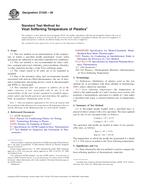 ASTM D1525-09
ASTM D1525-09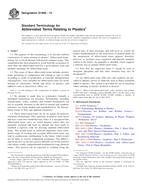 ASTM D1600-14
ASTM D1600-14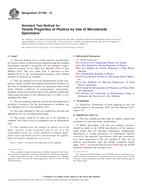 ASTM D1708-13
ASTM D1708-13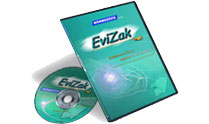
 Cookies
Cookies
